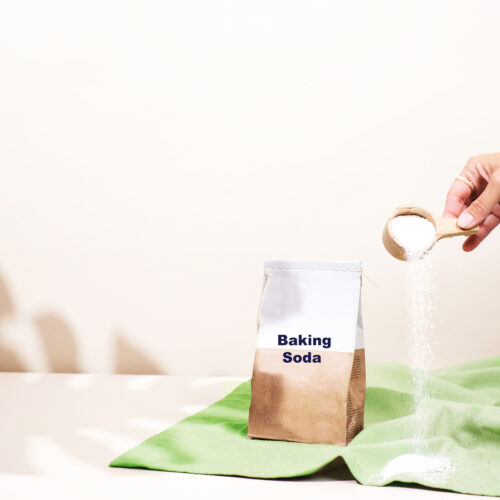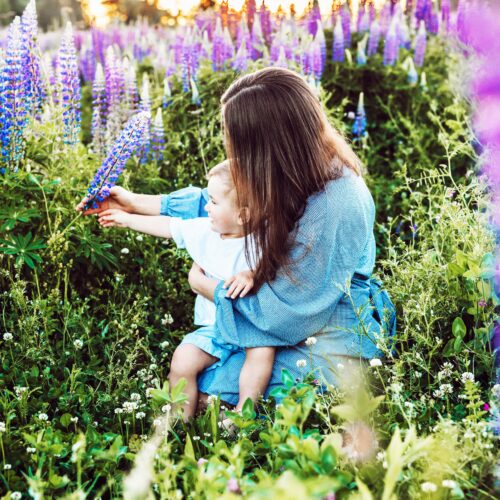 Explore Mexican Traditions for Honoring Departed Loved Ones on Day of the Dead Holiday November 2
Explore Mexican Traditions for Honoring Departed Loved Ones on Day of the Dead Holiday November 2
Dia de los Muertos, also known as Day of the Dead is a vibrant Mexican holiday celebrated annually, offers a rich tapestry of traditions and customs deeply rooted in honoring departed loved ones. This comprehensive guide presents essential activities and culturally significant practices to make the most of this sacred day.
Discover how to create an Ofrenda (altar) adorned with marigold flowers and meaningful mementos, prepare traditional delicacies like pan de muerto and sugar skulls, and engage in community events and ceremonies. Dive into the beauty of Dia de los Muertos, celebrating a fusion of life and death through art, music, and cherished memories.”
Here are some traditional activities and ways to celebrate Dia de los Muertos:
Create an Altar (Ofrenda):
-
- Set up an altar in your home or a communal space to honor and remember deceased family members and friends.
- Decorate the altar with photos, mementos, candles, papel picado (colorful paper banners), marigold flowers (cempasúchil), and the favorite foods and drinks of the departed.
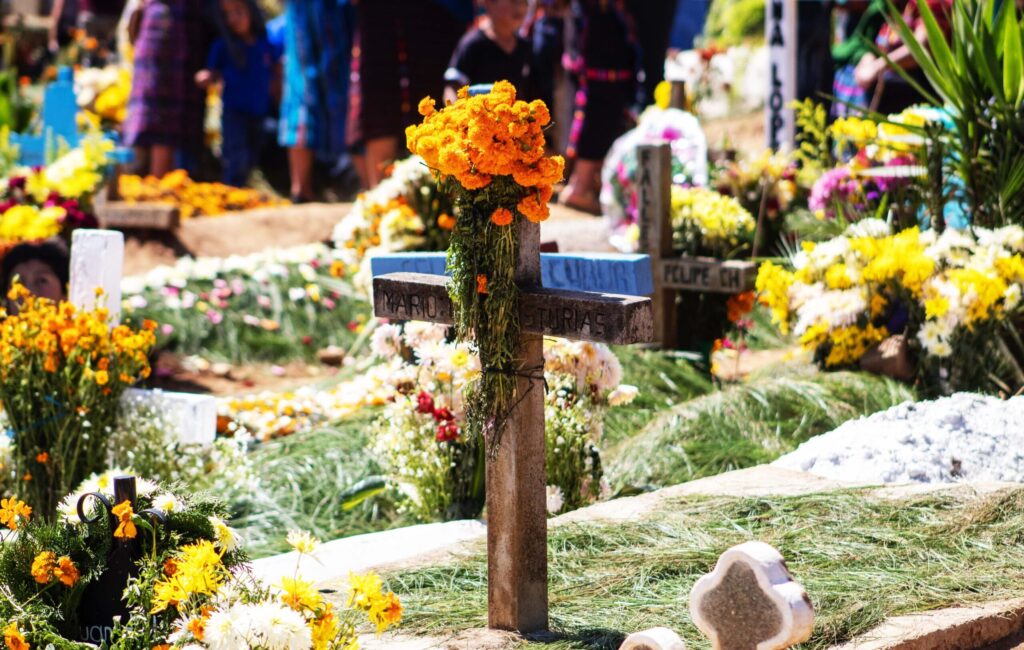
Visit Cemeteries:
-
- Visit the gravesites of loved ones, bringing flowers, candles, and offerings to decorate and remember them.
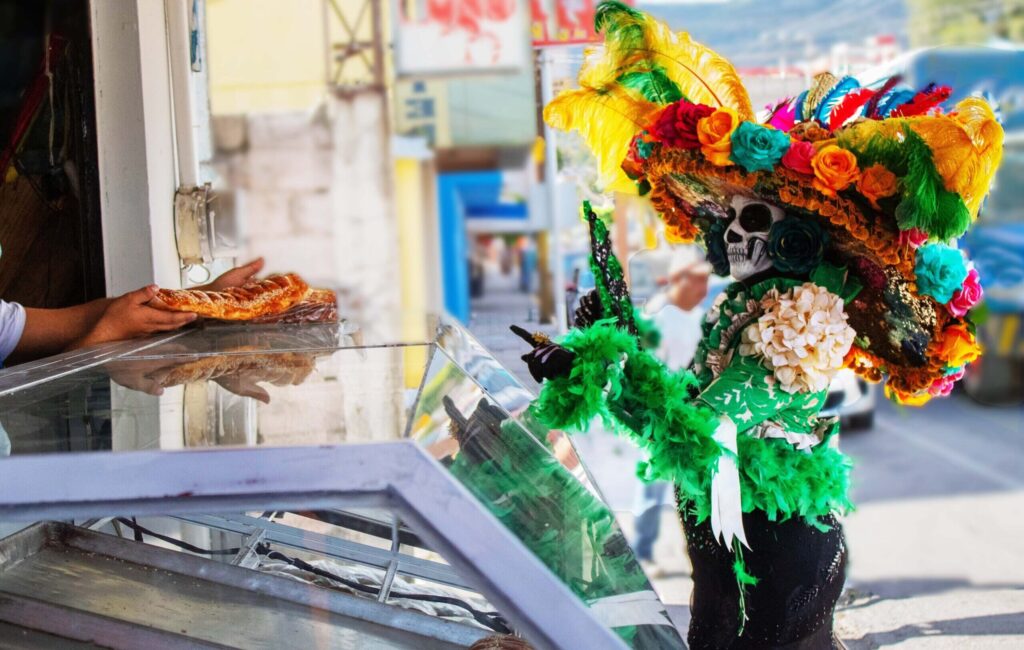
- Visit the gravesites of loved ones, bringing flowers, candles, and offerings to decorate and remember them.
Prepare Traditional Foods:
-
- Cook traditional Dia de los Muertos foods like pan de muerto (bread of the dead), sugar skulls (calaveras de azúcar), and favorite dishes of the departed.

- Cook traditional Dia de los Muertos foods like pan de muerto (bread of the dead), sugar skulls (calaveras de azúcar), and favorite dishes of the departed.
Face Painting and Costumes:
-
- Paint your face to resemble a Calavera (skull) or wear costumes representing death and life to symbolize the cycle of life and death.

- Paint your face to resemble a Calavera (skull) or wear costumes representing death and life to symbolize the cycle of life and death.
Attend Community Events:
-
- Participate in local events, parades, processions, or exhibitions related to Dia de los Muertos.
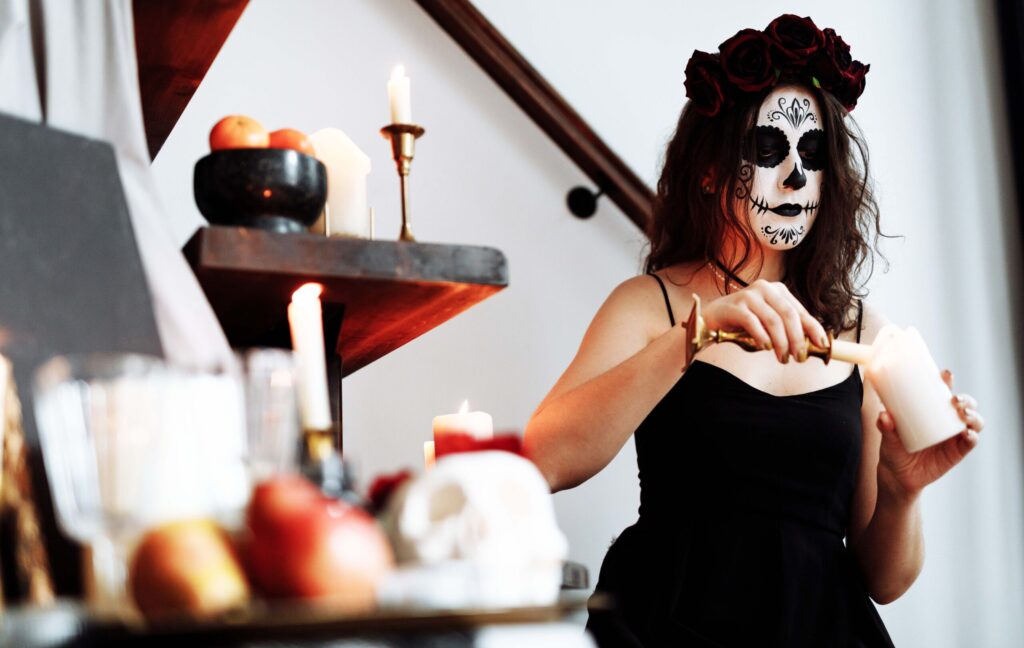
- Participate in local events, parades, processions, or exhibitions related to Dia de los Muertos.
Light Candles and Incense:
-
- Light candles and incense on the altar to guide the spirits of the departed back to the world of the living.
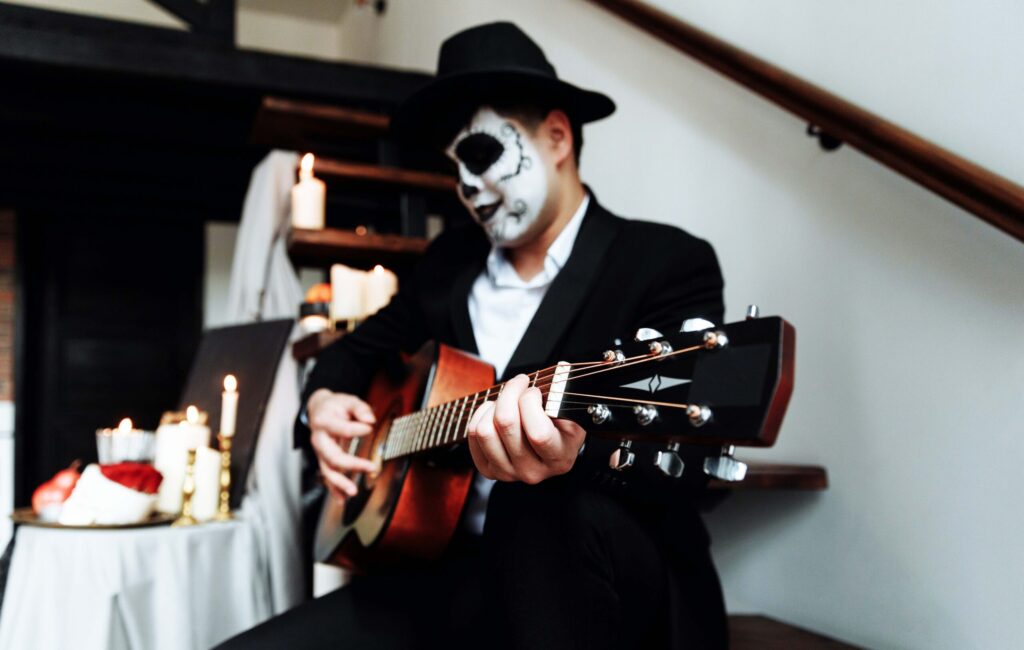
- Light candles and incense on the altar to guide the spirits of the departed back to the world of the living.
Listen to Music and Dance:
-
- Listen to traditional music such as mariachi or other regional styles and dance to honor the lives of those who have passed.

- Listen to traditional music such as mariachi or other regional styles and dance to honor the lives of those who have passed.
Create Art and Crafts:
-
- Make and display art and crafts related to Dia de los Muertos, such as sugar skulls, tissue paper flowers, or decorated skulls.
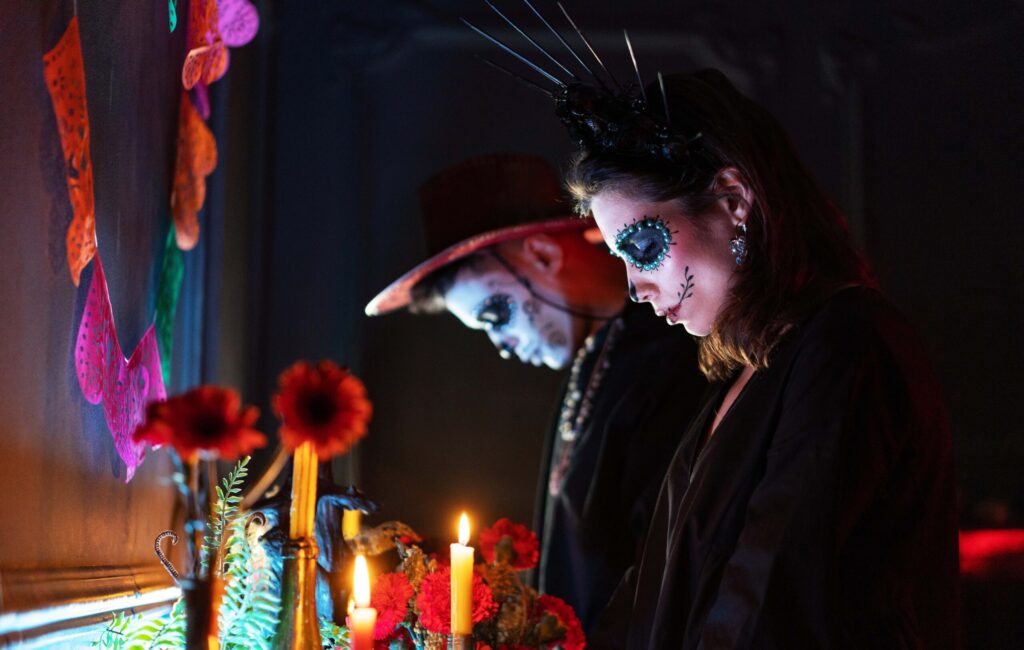
- Make and display art and crafts related to Dia de los Muertos, such as sugar skulls, tissue paper flowers, or decorated skulls.
Participate in Prayer and Reflection:
-
- Take a moment for personal reflection, prayer, or meditation to remember and honor the departed.
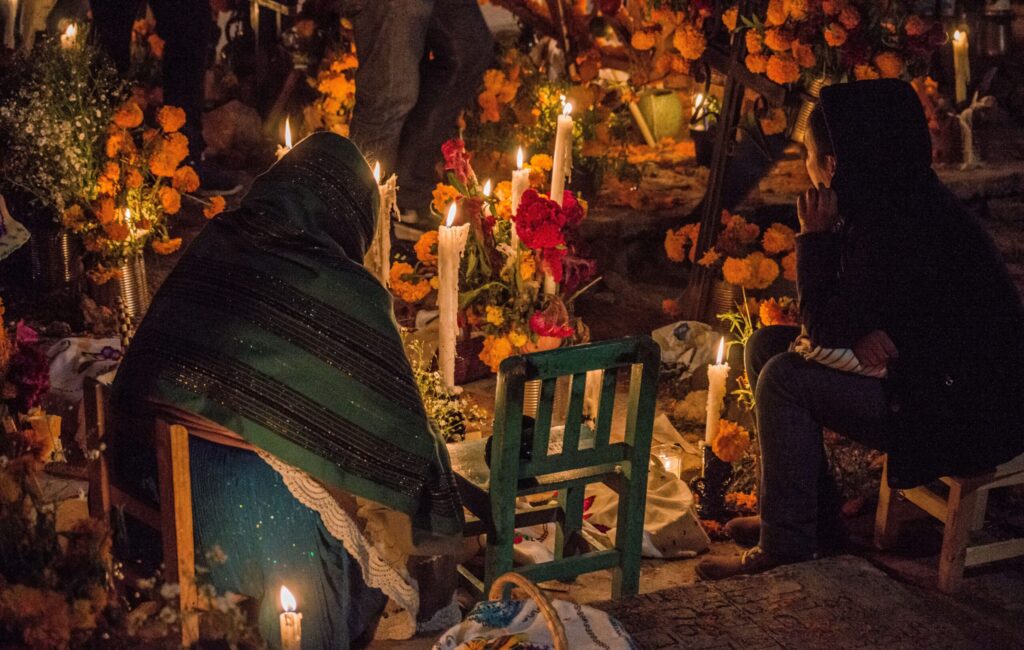
- Take a moment for personal reflection, prayer, or meditation to remember and honor the departed.
Contribute to Community Altars:
-
- Contribute to community altars set up in public spaces or local institutions to honor a collective remembrance of those who have passed.
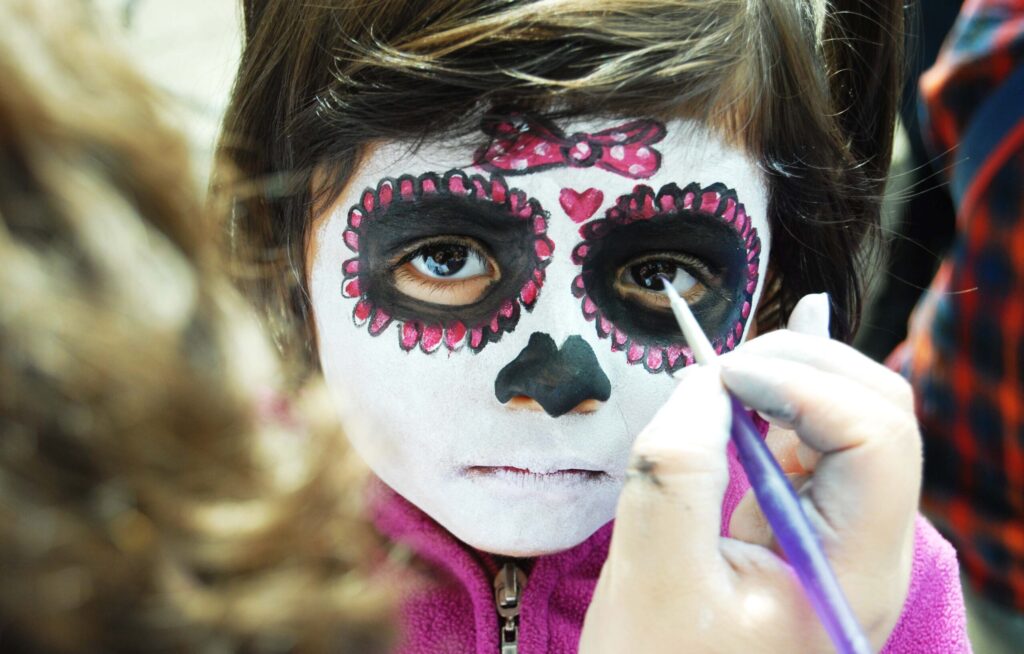
- Contribute to community altars set up in public spaces or local institutions to honor a collective remembrance of those who have passed.
Educational Activities for Children:
-
- Involve children in age-appropriate activities, such as coloring pictures of calaveras or teaching them about the significance of Dia de los Muertos.
TIP: The essence of Dia de los Muertos lies in honoring and remembering our loved ones in a celebratory and meaningful way, embracing the cycle of life and death with love and respect.
Did you know?
Dia de los Muertos is the significance of the “papel picado” or paper-cutting decorations commonly seen during the celebration. They can be seen all over Mexico. The intricate designs and patterns in papel picado are for more than just aesthetic purposes. The paper cutouts hold symbolic meaning in Dia de los Muertos. The holes and cutouts in the paper represent the idea of life and death being interconnected. The delicate, lace-like patterns remind us that life is fragile and fleeting, emphasizing the cyclical and fragile nature of life and death, a fundamental theme of Dia de los Muertos.
The holes and cutouts in the paper represent the idea of life and death being interconnected. The delicate, lace-like patterns remind us that life is fragile and fleeting, emphasizing the cyclical and fragile nature of life and death, a fundamental theme of Dia de los Muertos.
A little history:
Dia de los Muertos, or the Day of the Dead, is a deeply rooted and centuries-old tradition with origins that can be traced back to ancient Mesoamerican civilizations, particularly the Aztecs, Toltecs, and other indigenous groups. The traditions surrounding Dia de los Muertos have evolved over thousands of years, blending indigenous beliefs with Spanish influences.
Before Spanish colonization, the indigenous peoples of Mexico held various rituals and ceremonies to honor deceased loved ones. They believed in an afterlife and viewed death as a natural part of the human cycle. The Aztecs, for instance, celebrated a month-long festival dedicated to Mictecacihuatl, the Lady of the Dead.
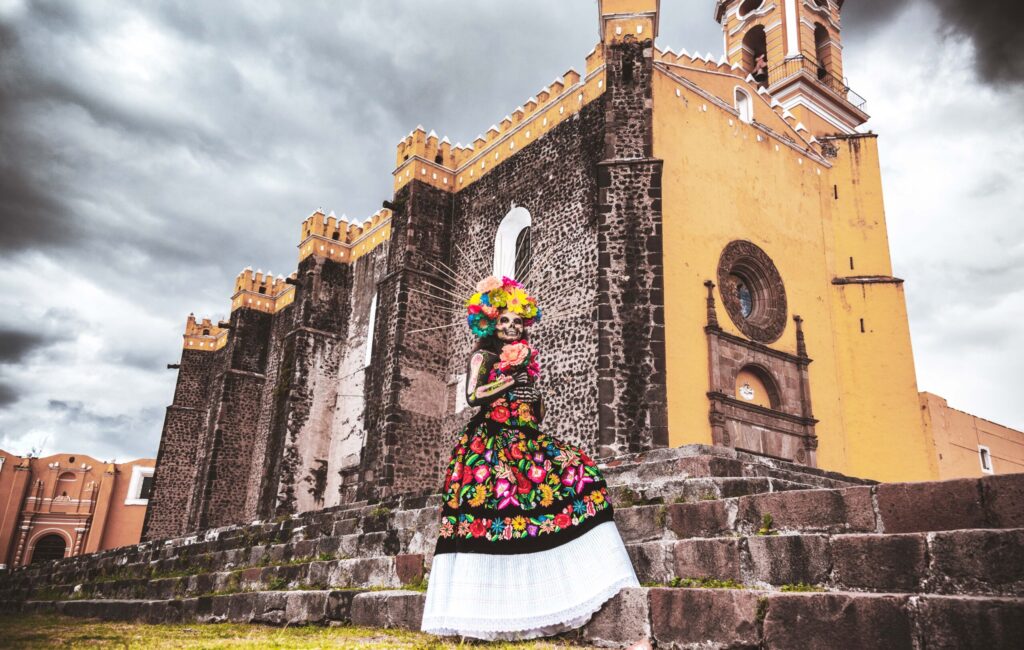
When the Spanish arrived in Mexico in the 16th century, they encountered indigenous celebrations honoring the deceased. Rather than eradicating these practices, the Spanish integrated them into their Catholic traditions, aligning Dia de los Muertos with All Saints’ Day (Día de Todos los Santos) and All Souls’ Day (Día de los Fieles Difuntos) on November 1st and 2nd.
Over time, Dia de los Muertos became a fusion of indigenous beliefs, Catholicism, and European traditions. Families constructed altars, known as ofrendas, to honor their deceased loved ones. They placed photographs, mementos, favorite foods, and drinks on the altars, believing that the spirits of the departed would return to visit and enjoy these offerings.
Marigold flowers, known as cempasúchil, became a central symbol due to their vibrant color and strong aroma, believed to guide the spirits back to the world of the living. Sugar skulls, or calaveras de azúcar, are also an integral part of the tradition, representing death and the sweetness of life.
Today, Dia de los Muertos remains a significant cultural celebration in Mexico and is recognized internationally, particularly in regions with Mexican diaspora. It’s a beautiful commemoration that preserves ancestral practices and encourages the remembrance and celebration of loved ones who have passed away.
